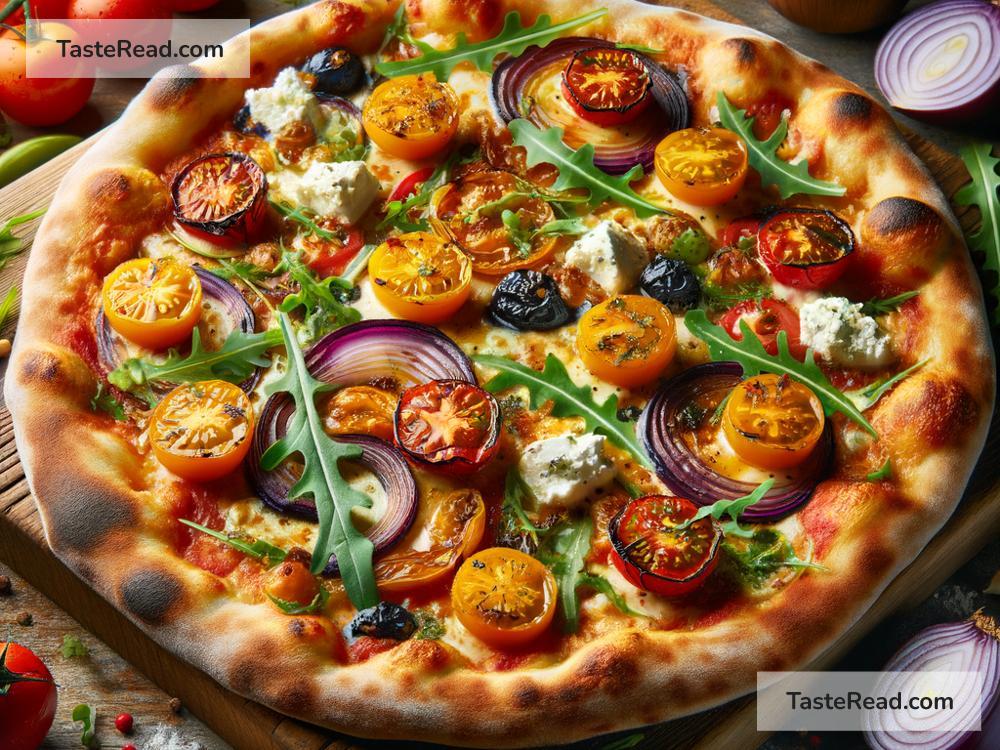How to Craft Gourmet Pizza Toppings
Everybody loves pizza! It’s one of the world’s most popular comfort foods. But what sets a regular pizza apart from a gourmet one? The answer is simple: the toppings. Crafting gourmet pizza toppings is an art that turns your pizza from ordinary to extraordinary. Whether you’re making it for yourself or impressing your friends and family, here is a straightforward guide to help you create gourmet pizza toppings at home.
Step 1: Start with Fresh Ingredients
Freshness is the secret to gourmet-quality toppings. Skip canned vegetables, processed meats, and pre-shredded cheeses if possible. Choose vibrant, fresh vegetables, high-quality cheeses, and protein-rich meats.
For vegetables, opt for farmer’s market finds or organic options like fresh tomatoes, bell peppers, mushrooms, arugula, or spinach. For meat, select premium cuts such as prosciutto, spicy salami, or grilled chicken. And when it comes to cheese, don’t just stick with traditional shredded mozzarella—explore other flavors like fresh buffalo mozzarella, goat cheese, or brie.
Step 2: Think Flavorful Combinations
A gourmet pizza isn’t just about piling random toppings on top; it’s about creating flavors that complement each other. Here are some delicious combinations to inspire you:
- Classic Mediterranean: Sundried tomatoes, Kalamata olives, feta cheese, spinach, and a drizzle of olive oil.
- BBQ Chicken Style: Grilled chicken, caramelized onions, smoky BBQ sauce, and gouda cheese.
- Fig and Prosciutto: Fresh figs, thinly sliced prosciutto, arugula, goat cheese, and balsamic glaze.
- Spicy Lover’s Delight: Spicy sausage, jalapeños, crushed red pepper flakes, and extra mozzarella for cooling the heat.
- Sweet and Savory: Pear slices, gorgonzola cheese, walnuts, and a touch of honey.
Get creative! Gourmet pizzas are all about thinking outside of the box and playing with sweet, spicy, tangy, and savory flavors.
Step 3: Roast or Prep Your Ingredients
One of the secrets to gourmet topping perfection is preparing your ingredients ahead of time. Cooking some of the toppings before putting them on the pizza can make all the difference. Roasting, sautéing, or caramelizing brings out deeper flavors that elevate your pizza.
For example:
– Roast cherry tomatoes with olive oil and garlic to create a rich, slightly sweet topping.
– Caramelize onions to add a touch of sweetness and depth.
– Sauté mushrooms with butter and herbs for a savory mushroom topping.
Take a few extra minutes to give your vegetables and meats that gourmet touch by cooking them before they hit your pizza dough.
Step 4: Use Herbs and Spices
Herbs and spices are the unsung heroes of gourmet pizza toppings. They take your toppings from good to amazing by adding extra layers of flavor. Fresh herbs like basil, oregano, thyme, and parsley make a huge difference, especially when added right before serving your pizza.
For an Italian-inspired pizza, sprinkle dried oregano and red pepper flakes before baking. Or try fresh arugula or basil leaves as a finishing touch for a refreshing burst of flavor. If you’re feeling adventurous, experiment with spices like smoked paprika, cumin, or even cinnamon (it pairs beautifully with figs or sweet toppings).
Step 5: Don’t Forget the Sauce
Sometimes, the sauce is just as important as the toppings. While traditional tomato sauce is always a good choice, gourmet pizzas often use alternative sauces to match their unique flavor profile. Consider these options:
- Pesto: Perfect for a fresh, herby pizza with ingredients like goat cheese and roasted vegetables.
- Alfredo Sauce: Makes a creamy base for pizzas topped with chicken, mushrooms, and spinach.
- BBQ Sauce: Works beautifully with grilled meats and smoky cheeses.
- Olive Oil: A minimalist choice that pairs well with finer ingredients like fresh tomatoes and mozzarella.
- Balsamic Glaze: Adds a sweet, tangy finish that blends perfectly with toppings like figs or prosciutto.
Feel free to mix and match sauces depending on the style of pizza you’re creating.
Step 6: Presentation Matters
Crafting gourmet pizza toppings isn’t just about taste; it’s also about making your pizza look beautiful. Arrange your toppings with care rather than simply scattering them. For example:
– Layer thin slices of vegetables evenly across the pizza.
– Place fresh herbs strategically for a pop of color.
– Let the cheese melt attractively and drizzle sauces on top for a polished finish.
The extra attention to detail will make your homemade gourmet pizza look worthy of a pizza restaurant menu.
Step 7: Bake It Right
Finally, the way your pizza is baked makes a big difference. Preheat your oven to its hottest setting (usually 450–500°F or higher) and use a pizza stone or a baking steel for an extra crispy crust. Gourmet toppings shine best on a perfectly baked pizza.
After pulling your pizza out of the oven, give it a finishing touch, such as a drizzle of olive oil, a sprinkle of flaky sea salt, or a squeeze of fresh lemon juice, depending on the flavor profile. These small additions can elevate a good pizza into a masterpiece.
Conclusion
Crafting gourmet pizza toppings isn’t hard—it’s about using fresh ingredients, balancing flavors, and taking a little extra care to prepare and arrange your toppings. From classic combinations to bold new experiments, you have endless possibilities to make your pizzas unique and delicious.
So, the next time you make pizza at home, skip the usual pepperoni-and-cheese routine. Use these tips to create a gourmet pizza that everyone will ask for again and again. Whether you stick to tried-and-true recipes or invent your own topping combos, your kitchen will soon become the ultimate gourmet pizza destination!


